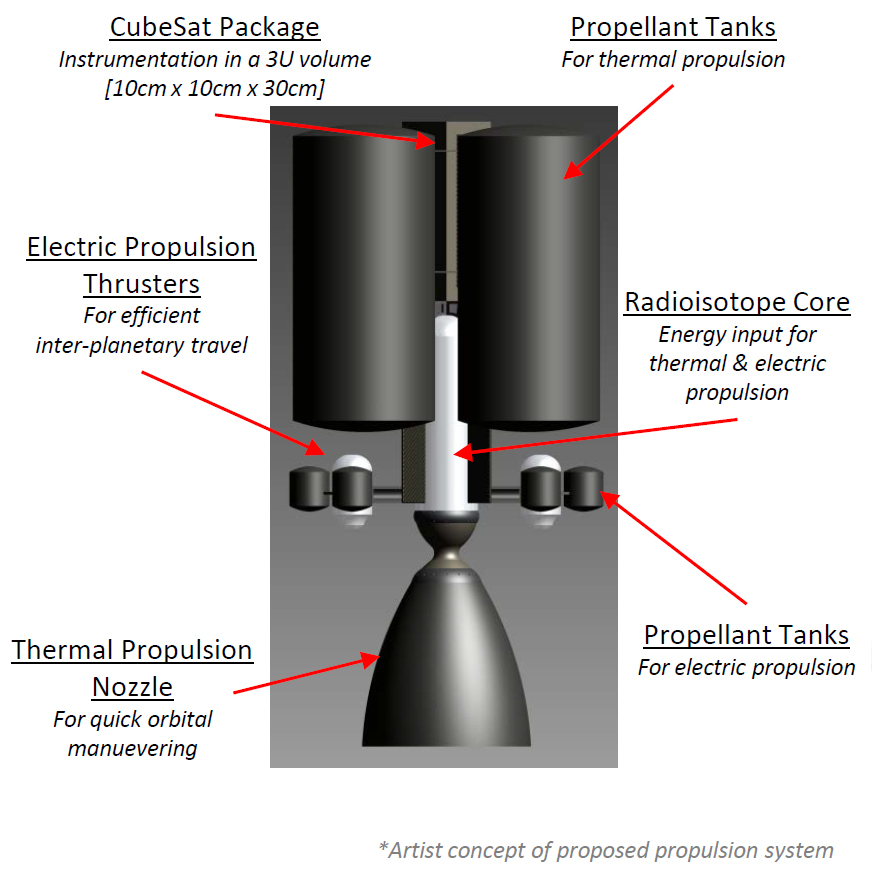Nathan Jerred
Universities Space Research Association
› 2014 Symposium Presentation (PDF)
› Phase I Final Report (PDF)
Description
With the cost of planetary exploration rising and budgets for such missions declining newer, cheaper, i.e. low mass, systems must be developed to perform exploration. Currently, small scientific beds which perform limited tasks are being developed and launched into Low Earth Orbit (LEO) in the form of small-scale satellite units, i.e. CubeSats, utilizing solar-based power. However, if a reasonable propulsion system could be developed, these low cost CubeSat platforms could be used to perform exploration of various extra-terrestrial bodies within the solar system; such as Europa. Current standard propulsion technology does not provide the complete answer. Chemical-based systems are high mass and provide insufficient performance for deep space missions. Electric propulsion (EP) is very efficient, i.e. high Isp, but has low thrust, leading to long mission times if orbital maneuvering is required. Thermal propulsion (TP) yields high thrust, but at the expense of a high consumption rate of propellant. Therefore, pairing an EP and TP system into a dual-mode propulsion unit becomes beneficial, where the strengths of each system are used appropriately. The high thrusting capabilities of the thermal mode are ideal for quick Earth orbit escape, drastic orbital maneuvering and orbital insertion at location. The high efficiency of the electric-mode is ideal for interplanetary travel. Researchers at the Center for Space Nuclear Research (CSNR) are proposing a radioisotope-based, dual-mode, low mass propulsion system for a CubeSat payload capable of extending their exploration realm out of LEO. Such an integrated propulsion system would allow for beneficial exploration to be conducted, even within the current budget limitations.
For the proposed work a complete system design will be provided, optimized for a Europa destination with a 10 kg payload. Modeling software such as AGI STK, COMSOL, MALTO and Aspen will be used to design and optimize the various components of the overall system. The design of an experiment will also be conducted to use existing CSNR hardware to evaluate propellant performance within the thermal mode.































